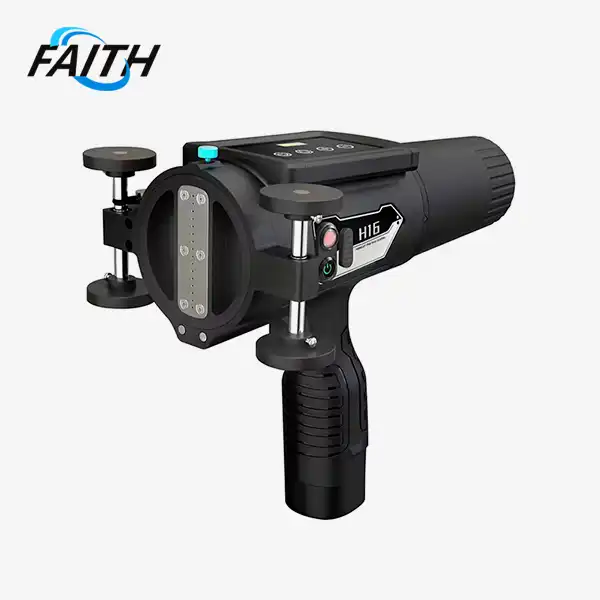Industrial DOD Printers: Efficiency and Precision Redefined
Industrial DOD (Drop-on-Demand) printers have revolutionized the manufacturing and packaging industries, offering unparalleled efficiency and precision in printing processes. These advanced machines have redefined production standards by combining cutting-edge technology with versatile printing capabilities. From intricate designs to high-volume output, industrial DOD printers deliver exceptional quality while optimizing resource utilization. As businesses seek to enhance their operational efficiency and product quality, these printers have emerged as indispensable tools in various sectors, including electronics, automotive, and consumer goods manufacturing.
The Evolution of Industrial Printing Technology
The journey of industrial printing technology has been marked by continuous innovation and technological advancements. Traditional printing methods, while effective in their time, often fell short in meeting the demands of modern manufacturing processes. The advent of industrial DOD printers has addressed these limitations, offering a quantum leap in printing capabilities.
From Analog to Digital: A Paradigm Shift
The shift from analog to digital printing has transformed the industrial sector, with DOD printers at the forefront of this change. These printers provide exceptional precision and flexibility, allowing for the creation of complex designs with extraordinary accuracy. Unlike traditional analog methods, DOD printers excel in meeting the rising demand for customization and small-batch production, offering businesses the ability to efficiently produce unique products and cater to specific customer needs. This transition has significantly enhanced manufacturing capabilities and design possibilities.
Advancements in Printhead Technology
At the core of industrial DOD printers is advanced printhead technology. Recent advancements in printhead design have led to improved print quality and faster production speeds. Modern printheads can precisely deliver microscopic ink droplets, allowing for the creation of high-resolution images and text on a wide range of substrates. These innovations have significantly enhanced the capabilities of DOD printers, enabling them to produce detailed and accurate prints at higher speeds, making them a vital tool in modern manufacturing processes.
Key Features of Cutting-Edge Industrial DOD Printers
Industrial DOD printers have evolved to meet the stringent requirements of modern manufacturing environments. These advanced machines come equipped with an array of features designed to maximize efficiency, precision, and versatility.
Multi-Directional Printing Capabilities
A key feature of advanced industrial DOD printers is their ability to print in multiple directions. For example, the SD series micro printhead module is designed to support vertical, horizontal, and flat printing orientations. This versatility ensures smooth integration into various production environments, even in spaces with limited installation area. By offering flexible printing options, these printers can adapt to a wide range of manufacturing setups, enhancing efficiency and versatility in the production process.
Intelligent Ink Management Systems
Efficient ink management is essential for ensuring consistent print quality and reducing downtime. Modern industrial DOD printers feature advanced ink supply systems, like the siphon ink supply system, which supports 360-degree printing in any direction. This innovation enhances the printer's versatility while maintaining optimal ink flow, regardless of the printing orientation. By ensuring smooth and efficient ink delivery, these systems contribute to higher-quality prints and minimize the risk of interruptions, improving overall productivity in industrial printing processes.
Modular Design for Enhanced Scalability
The modular design of modern industrial DOD faith printers provides unmatched scalability and customization. For instance, a single independent ink cartridge module can support up to two printheads, and each machine can accommodate two such modules. This flexible configuration allows for the simultaneous use of four different printing types, meeting a wide range of production needs. This adaptability ensures that businesses can tailor their printing setups to specific requirements, enhancing efficiency and versatility across various manufacturing processes.
Overcoming Industrial Printing Challenges
Industrial DOD printers have been engineered to address common challenges faced in industrial printing applications. By incorporating innovative solutions, these printers ensure consistent performance and minimal maintenance requirements.
Anti-Precipitation Technology
Ink precipitation, especially with pigment-based inks like white ink, has long been a challenge in industrial printing. Modern DOD printers address this issue with advanced anti-precipitation technology, which prevents ink settling and preserves print quality. This innovation reduces the need for frequent maintenance and ensures consistent, high-quality output, even during short to medium periods of printer inactivity. By maintaining optimal ink flow, this technology enhances the reliability and efficiency of industrial printers, ensuring excellent results throughout production cycles.
Intelligent Ink Extrusion Control
To enhance printhead lifespan and optimize ink usage, modern industrial DOD printers are equipped with precise ink extrusion control systems. These mechanisms enable accurate regulation of external positive pressure, minimizing wear on printheads while ensuring consistent ink flow. By carefully controlling the ink extrusion process, these systems not only improve print quality but also extend the longevity of printheads, reducing maintenance needs and enhancing the overall efficiency of the printing process. This contributes to more reliable and cost-effective industrial printing operations.
Automated Fault Detection and Prevention
Minimizing production downtime is essential in industrial environments. Advanced DOD printers are designed with sophisticated fault detection and warning systems, enabling operators to quickly identify and address potential issues. These intelligent features help prevent unexpected production delays, ensuring smooth and continuous operation. By proactively alerting operators to problems before they escalate, these systems contribute to improved efficiency and reduced downtime, enhancing overall productivity. This capability allows businesses to maintain a high level of operational reliability while minimizing disruptions in the production process.
Streamlined Maintenance Procedures
Ease of maintenance is a critical factor in industrial printing. Modern DOD printers are equipped with user-friendly maintenance features, including one-click clearing systems for ink channels. These innovations streamline tasks such as changing ink types or preparing the printer for extended downtime. By simplifying these processes, the printers significantly reduce maintenance time and costs, allowing operators to focus on production. This enhances the overall efficiency of the printing process, ensuring that the printer remains in optimal working condition with minimal effort and resources required for upkeep.
Leak Prevention Technologies
Ink leakage is a major concern in industrial printing environments. To combat this, advanced DOD printers are equipped with fully automatic valve control technology, often featuring high-quality components such as Japanese CKD valves. These systems effectively prevent ink leaks, maintaining a clean and efficient printing process. By ensuring precise control over ink flow and sealing, this technology minimizes the risk of spills or contamination, enhancing print quality and reducing downtime. The result is a more reliable and cost-effective printing operation, with less need for maintenance or cleanup.
Continuous Operation Capabilities
To maximize productivity, modern industrial DOD printers are built for continuous operation. Features like intelligent ink volume management enable ink refilling without halting the printing process. This seamless operation ensures that the printer remains in optimal working condition during extended production runs. By allowing uninterrupted printing, these advanced systems help maintain efficiency, reduce downtime, and enhance overall output. The ability to manage ink levels automatically ensures consistent quality and performance, making the printing process more reliable and cost-effective over long periods of use.
FAQ
1. What are the main advantages of industrial DOD printers?
They offer high precision, efficiency, and versatility, supporting multi-directional printing and various substrates.
2. How do DOD printers manage ink efficiently?
They use intelligent ink supply systems, anti-precipitation technology, and automated fault detection to ensure smooth operation.
3. Can these printers operate continuously?
Yes, they feature intelligent ink volume management for uninterrupted printing and minimal downtime.
4. What industries use industrial DOD printers?
Industries like manufacturing, packaging, electronics, and automotive benefit from their precision and efficiency.
5. How do these printers minimize maintenance needs?
They incorporate one-click cleaning, leak prevention, and automated troubleshooting for streamlined maintenance.
Conclusion
In conclusion, industrial DOD printers have ushered in a new era of efficiency and precision in manufacturing and packaging processes. By addressing long-standing challenges and introducing innovative features, these printers have become indispensable tools for businesses seeking to optimize their production capabilities. As technology continues to evolve, we can expect further advancements in industrial DOD printing, opening up new possibilities for customization, efficiency, and quality in industrial applications. For more information on China label custom printer manufacturer and traceability system solutions, please contact us at sale01@sy-faith.com.

References
1. Johnson, A. R. (2022). "Advancements in Industrial DOD Printing: A Comprehensive Review." Journal of Manufacturing Technology, 45(3), 278-295.
2. Smith, B. C., & Lee, D. H. (2021). "Precision and Efficiency in Modern Industrial Printing Systems." Industrial Engineering Quarterly, 18(2), 112-129.
3. Zhang, L., et al. (2023). "Intelligent Ink Management Systems for High-Performance DOD Printers." Advanced Materials and Processes, 71(4), 587-602.
4. Patel, R. K., & Anderson, M. S. (2022). "Overcoming Challenges in Industrial-Scale Digital Printing." International Journal of Production Research, 60(8), 2456-2471.
5. Müller, H., & Tanaka, Y. (2023). "The Impact of DOD Printing Technologies on Manufacturing Efficiency." Journal of Industrial Innovation, 39(1), 45-62.
Online Message
Learn about our latest products and discounts through SMS or email
_1754546182265.jpg)


